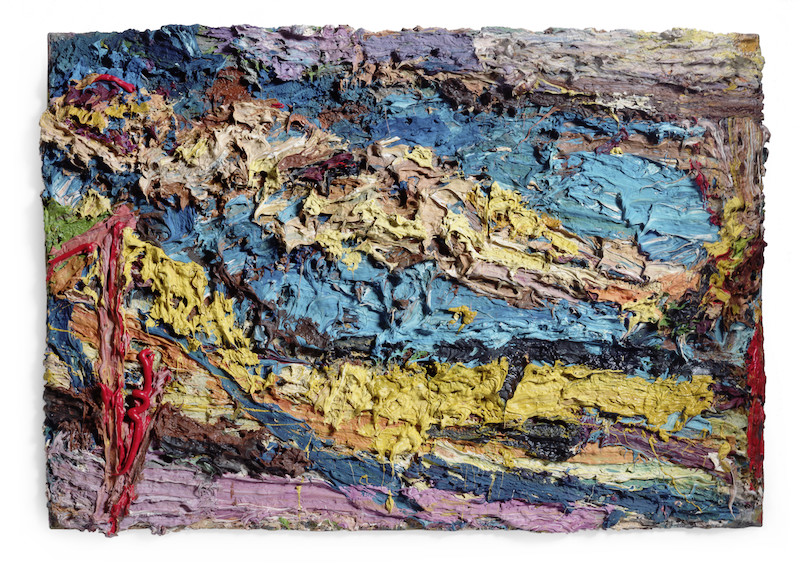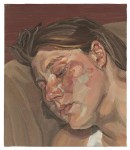Art market confidence is a fickle thing. Predictions turn at the failure of a headline lot, general impressions and a sale’s atmosphere count for a lot even if the statistics tell a different story. If this report of the week’s post-war and contemporary art auctions in London had been written after Wednesday night’s mixed sale at Sotheby’s, it would tell a more simplistic story; that the market has cooled off, waking only for the one-off, truly special works.
Yet the following night, Christie’s demonstrated that if estimates are kept shrewdly cautious, there is demand for top pieces and considerable appetite in the middle, six figure market – as seen in the week’s day sales too. Although it was a lower grossing sale, it felt more confident.
As Christie’s auctioneer Jussi Pylkkanen said, ‘Well curated lots well priced will be the catchphrase for the next six to 12 months’.
Phillips kicked off the week on 9 February with a £24.6m sale from 79% of lots sold. With an ambitious estimate, it was a statement of intent by the auctioneers. Although failing to reach expectations and with nearly half of sold lots struggling to reach their low estimates, it was still a high total for a Phillips’ London evening sale, led by a pleated Piero Manzoni canvas, Achrome, 1958, at £5.6m. On 11 February, Bonhams also achieved its highest total for a Contemporary sale at £6.4m led by Frank Auerbach’s E.O.W. on her Blue Eiderdown V, 1963, at £2m.
At Sotheby’s, Oliver Barker opened the 10 February evening sale with the announcement that the headline lot, Gerhard Richter’s Abstraktes Bild (725–4), estimated at £14–20m, had been withdrawn along with three other works. Casualties of vendor nerves.
It was a stop-start sale. Rampant bidding from nine parties on an enormous 2014 oil by Romanian artist Adrian Ghenie, inspired by Van Gogh’s Sunflowers, drove it above a £400,000–600,000 pitch to sell for £3.1m. Such feverish speculation on an artist du jour felt very 2013 and at odds with the rest of the sale in which bidding was generally more staid, resulting in 78% of 55 lots sold – notching up a £69.5m total. That’s half the equivalent sale last year.
Some estimates were pushy, such as the £9–12m placed on Alberto Burri’s fresh-to-the-market Sacco e Rosso, c. 1959, double the previous record for Burri at £4.7m made in 2014. It sold at just £9.1m to a sole bidder who, said Sotheby’s Cheyenne Westphal, ‘had the courage to go there’, making a substantial new record.
With bidding from 38 countries, the sale, said Westphal, reflected a ‘very efficient, highly functioning market that knew what it wanted’.
The market certainly wanted Lucian Freud’s Pregnant Girl, 1960–61, which attracted six bidders and set a new high for an early work by Freud, selling on the phone for £16.1m (estimate £7–10m). Depicting his 17-year-old lover Bernadine Coverley while pregnant with their daughter, fashion designer Bella Freud, it had been in the same collection for over 30 years, having last sold in 1973 for £44,000.
‘It’s a painting I’ve known for a long time,’ said Oliver Barker. ‘What appealed about it was the tenderness, it unlocked something in buyers. A lot of his [Freud’s] nudes are very harsh. The market has preferred his later works which have more international recognition, so it’s exciting that this drew bidding from America, Europe, Russia and Asia.’
Two smaller, later portraits by Freud of his daughters were also in demand at Christie’s sale the following night – Head of Esther (1982–83) and Head of Ib (1983–84). Consigned from the same source but offered separately at £2.5–3.5m apiece, fittingly Ib (£2.5m) followed Esther (£4.8m) to the same new home.
Christie’s auctioneer Jussi Pylkkanen selling Lucian Freud’s ‘Head of Esther’ with the sale’s top lot, Peter Doig’s ‘The Architect’s Home in the Ravine’ (£11.3m) hanging behind

British artists dominated Christie’s healthy 89% sold 61 lot sale, accounting for six of the top 10 prices and pushing the total to £58m. Peter Doig’s The Architect’s Home in the Ravine of 1991 was, predictably, the top lot, knocked down for the low estimate at £11.3m.
Francis Bacon’s biographer Michael Peppiatt consigned a 1975 oil titled Two Figures by the artist, which also sold on low estimate at £5.5m.
The evening made a new record for the American minimalist Robert Mangold (b. 1937) with £746,500 for a fern green untitled abstract from 1973; one of eight minimalist works from the collection of Marc and Frédérique Corbiau. There was also a new record for Joseph Beuys: £854,500 for a 1972 blackboard painting.
While destabilising world events scared off some new buyers, chairman Francis Outred said that ‘older, seasoned collectors turned up again and bid aggressively’.
Shrewd, experienced buyers who sat out and observed the feverish, bloated prices of the past few years may now be wading back in, seeing value in works again after some of the heat has burnt off. It’s a more sensible market, but despite all the talk and wider events, it’s far from doom and gloom.






